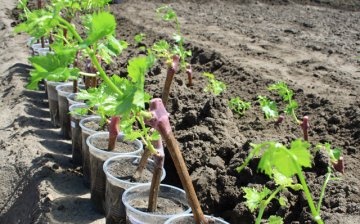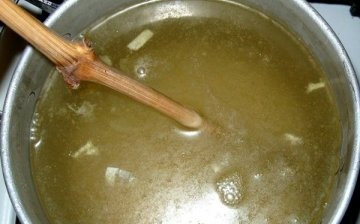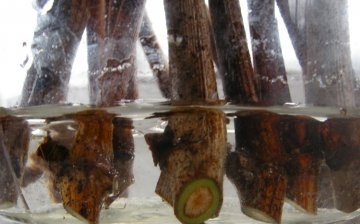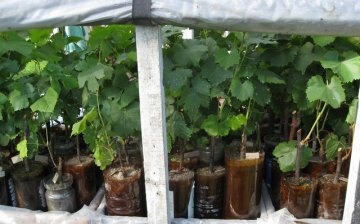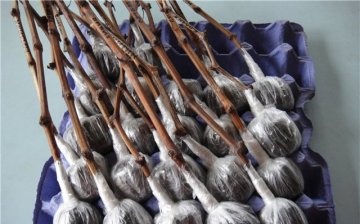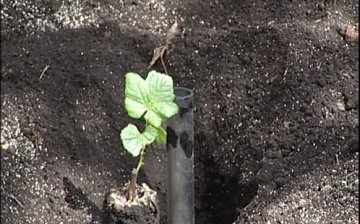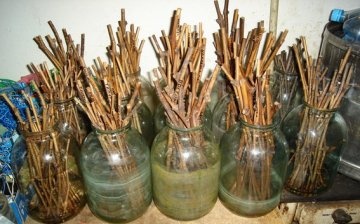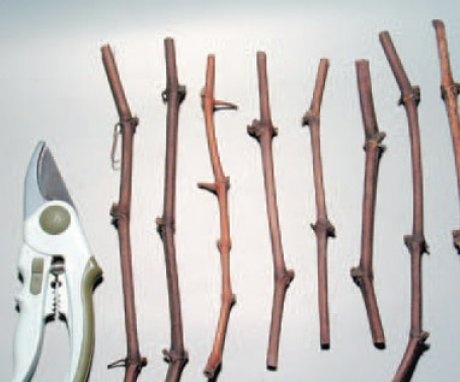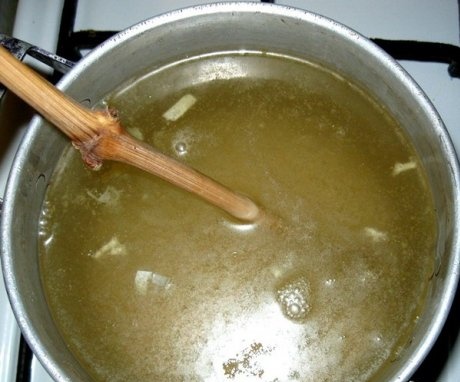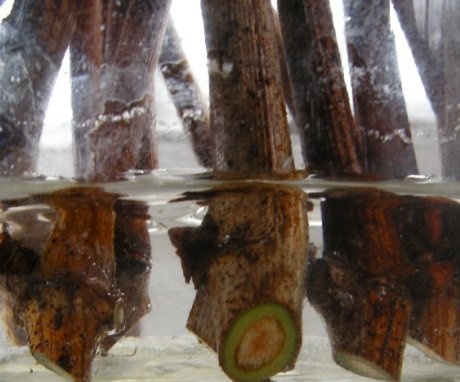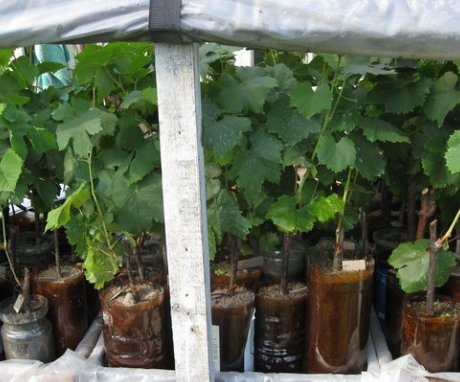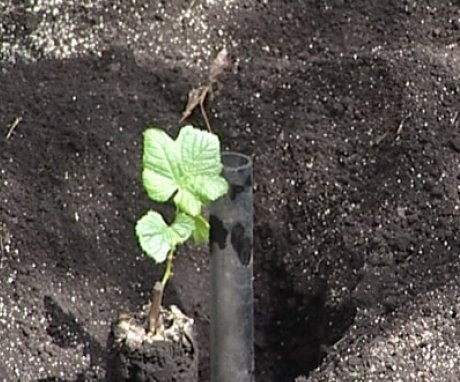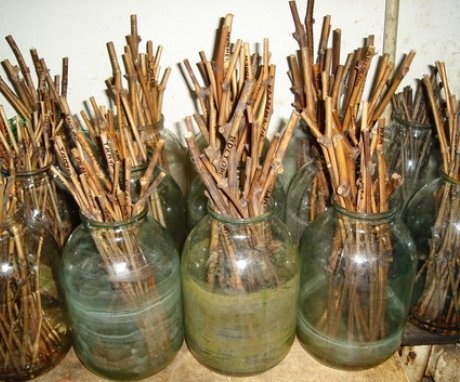Germinating grape cuttings: the secrets of successful reproduction
You don't have to be a professional breeder to successfully cultivate juicy berries. There are effective and simple technologies for growing grapes and novice gardeners.
Content
- Breeding methods for seedlings: which one to choose
- How to properly prepare cuttings
- Role of waxing
- Preparatory work before growing
- Plastic Bottle - Affordable Kilchevator
- How to germinate seedlings in cups and bags
- Spring planting of cuttings
- Sprouting indoors according to Radchevsky
Seedling breeding methods: which one to choose
The cultivation result will be favorable if you adhere to the cultivation technology and choose the right zoned variety.
Young plants are obtained from:
- Cherenkov.
- Seed.
- With the help of layering and grafting.
Seeds are sown in order to obtain new varieties or propagate species that are difficult to take root. As practice shows, out of 1000 copies, only a few are of interest. The quality of everyone else suffers from the original. When gardening in your backyard, it is worth focusing on vegetative methods.
The easiest way to get planting stock is to use green summer cuttings or woody winter cuttings.
The first year, seedlings require special attention. Time for cutting shoots and rooting depends on the type of plant and latitude. It is most rational to use local varieties. Sprouting stems is a surefire way to produce healthy vines of the same quality as the mother plant.
How to properly prepare cuttings
You need to worry about planting material in advance. In autumn, cutting off the vines, choose suitable shoots. The middle part of the fruit arrow or a branch cut into a replacement knot is used as a raw material.
The best option is branches that bear fruit abundantly in the season, with a diameter of 7 to 10 mm. The length of internodes is 7-10 cm. Such indicators are average static. It is necessary to remember about the existence of varieties with a thin vine.
The sequence of actions when preparing cuttings:
- All foliage is removed from the branch, shoots, stepsons, unformed tops.
- Raw materials are cut, leaving 4 buds. The distance from the upper bud to the edge of the cutting is 2 cm. The cut itself is oblique, starting from the eye.
- The end under the lower eye should be straight (5 mm from the lower kidney).
- To speed up the process of root formation, draw 3 vertical stripes (length 3 cm) to the bast with a needle or knife.
- Bunches are formed from the prepared shoots without mixing different varieties. Next is the marking.
- Cuttings are dipped in clean water for 24 hours, increasing the moisture index... After they are treated with 5% copper sulfate and dried.
- The shoots are wrapped in polyethylene.
At home, a small amount of material will do well in the refrigerator. If there are a lot of grapes, you can take it to the cellar, basement, or just bury it in the ground.
It is also impossible to forget about raw materials.
In the first two cases, they are examined several times during the winter and turned over to the other side. If the buds open too early, grafting will fail. Having chosen suitable grape branches in the fall, cuttings are prepared for germination.
Role of waxing
There is an effective way protect the cuttings from drying out. Moisture does not evaporate through the sections covered with a layer of paraffin. The substance contributes to the formation of a natural protective cover.
How waxing is done:
- Any container with a volume of 0.5 liters is taken.
- It fills with water.
- Sparked paraffin is added (approximately 2/3 of the candle).
- The dishes are put on fire and heated until a layer of melted paraffin forms on the surface.
- The surface of the mixture is rather hot (80-850C).
- After removing the dishes from the heat, they are allowed to cool to 65-750C.
- The temperature drop takes approximately 20-25 minutes.
- After this time, the cuttings are immediately dipped in paraffin (upper cut and first bud).
- Pre-prepare tall dishes with cold water, where the grapes are placed after treatment with paraffin.
It is convenient to melt the substance "in a water bath" by crumbling it into a narrow iron container. The addition of wax or garden varnish (1: 3) increases the plastic properties of the wax and promotes the formation of a thinner layer. You can buy a special wax for treating vaccinations. Waxing helps prevent excessive evaporation of moisture through the cut.
Preparatory work before growing
Waiting for the beginning of spring and the end of winter, they resume active actions. During this period, properly prepared and stored raw materials are ready for propagation... It is necessary to help the shanks "wake up" faster. The branches taken out of storage are checked for safety by making a transverse incision with a pruner.
The emerging droplets of moisture "tell" about the good condition of the workpieces.
If no liquid appears, the stalk is dry. It's also bad when the water oozes by itself, without a cut. This happens with a rotten shank. The preserved grapes have a light green cut, black blotches are absent.
Action before growing:
- Planting material is soaked for 48 hours in warm settled or snow water, which is changed every day.
- A prerequisite is its purity. Tap liquid will not work.
- It is impossible to immerse cuttings under water for a long time. Long-term lack of oxygen will destroy them.
- It is recommended to add growth stimulants (Epin, heteroauxin, sodium humate). Natural substances also stimulate the development of cuttings. Solutions are prepared from honey (1 tablespoon per 10 liters of water) or aloe juice (ratio of juice and water 1: 2). In such liquids, the lower parts of the branches are kept for 24 hours.
After soaking, it is advisable to carry out prophylaxis against pests. Gray mold, mottled necrosis, black spotting can be troublesome.
To do this, prepare a 0.5% solution of Chinosol. Cuttings are processed for 3-4 hours. It is important to apply this concentration of the drug. Because of the pungent odor, Fundazol is best not to use.
Chemicals can be substituted with folk remedies for pest control. At home, dissolve 2 g of potassium permanganate in 10 liters of water.
After the end of all procedures, the material is ventilated, stored in polyethylene for several days. Temperature range - 12-160C. Before germination, you need to help the cuttings "wake up".
Plastic Bottle - Affordable Kilchevator
For the propagation of grapes, a special device is prepared in which it passes pre-planting preparation... The role of the kilchevator is to create an increased temperature in the zone of root formation.
Under such conditions, rhizome development is accelerated, and foliage formation in the colder area slows down. Sophisticated devices with electric heating or natural thermo-formers can be completely replaced by an ordinary plastic bottle.
Germination actions:
- Trim the neck of the container.
- Make several holes in the bottom.
- Fill in drainage.
- Top - potting mix (7 spoons).
- Stick the grapes in obliquely so that the top bud and the edge of the bottle are at the same level.
- Steam the old sawdust and cover the soil on top.
- Hide the shank under a plastic cup.
- Place structures with a peephole from the window. When the shoot grows up and the glass becomes small, it is released from under the shelter.
- Watering is moderate. Water is poured into a pallet. The container with the handle is placed there for 15 minutes. The temperature regime in the room is 20-250C.
- In the kilchevator, seedlings grow until June or early July. During this time, leaves appear, the grapes take root. Shoots are planted in the ground, in a permanent place.
- A plastic bottle is the simplest home-made kilchevator.
How to germinate seedlings in cups and bags
Cuttings take root very well in plastic cups. Technology:
- Prepare a 0.5l container.
- Make 3-4 holes with an awl in the bottom.
- Mix soil and leaf humus. Cover the bottom with the substrate. Layer thickness - 2 cm.
- Fix a small plastic cup on top of the soil. Remove the bottom. Water the earth.
- Pour washed river sand into the second container. Watering abundantly, it is removed.
- A depression (4 cm) is made in the middle of the sand with a stick.
- Insert the seedling and water well.
- From above, the soil is covered with sand. The whole structure is hidden under a plastic bottle without a neck and bottom.
Every day, or at least once every few days, the grapes need additional moisture. Only warm water is used for irrigation. When horses appear near the walls of the glass and the formation of 4 leaves, the upper bottle is removed.
Cuttings in cups will be good on a sunny windowsill. Under optimal conditions, 2-3 weeks is enough for the first leaves to appear. The roots will please the appearance in 4-6 weeks. On average, it takes 45-50 days to form a full-fledged planting material.
Scions can be obtained using a plastic bag. To do this, put wet foam rubber at its bottom, into which the vine is stuck. The contents are carefully wrapped and left in the closet.
After 10 days, the formation of root buds is checked.
Next, the cuttings are grown in a plastic cup, following the recommendations described above. Thanks to this method, it becomes possible to select already sprouted shoots, to save time and space by the window. In February, shanks can be germinated using cups or plastic bags.
Spring planting of cuttings
Grapes are easy to root with green shoots. The planting material is cut 10-15 days before flowering or immediately after it. Breaking off and stepchild culture, get green cuttings.
The raw materials are immediately dipped into a bucket filled with water. The shanks are cut into pieces of two buds. The blanks are kept in water.
Boxes or cups with planted sprouts are taken to the greenhousewhere they are hidden from the bright sunlight. After the start of active growth, the darkening is removed.
The shanks will develop throughout the summer. In the fall, it's time to take care of their further storage: the grapes are placed in the cellar.
After waiting for the end of winter, the seedlings are determined for permanent residence. This method allows you to grow rare varieties of crops at home. Reproduction by green cuttings is a fairly long, but reliable enterprise.
Sprouting indoors according to Radchevsky
The prepared raw materials are placed in glass jars (1 l), into which several centimeters of water are poured. The containers are kept warm to prevent cooling of the liquid.
Cuttings need sun. Even more efficient is the light of fluorescent lamps. After 10-12 days, shoots will appear, after a week - roots. At this time, it is important to monitor the water level in the bank.
Germination tips:
- As practice has shown, the formation of the root system is favorably influenced by 100% humidity at the interface between liquid and air.To ensure such conditions, the bottom of the can is covered with a layer of cotton wool (2-3 cm). Above - gauze. It should not allow the bottom cut of the cutting to catch the cotton wool.
- Water is poured so that it does not reach the top of the "pillow" by 0.5-1 cm. The surface should be damp, but not hidden under the liquid.
- The jar is tightened with cling film in several layers, secured with an elastic band at the neck. One container can easily fit 10 shanks. They carefully pierce the polyethylene, being careful not to stretch the punctures.
- To control the temperature regime, a thermometer is placed in the jar so that its ball does not come into contact with the bottom. The readings of the device should be equal to 26-280C. Outside conditions - 18-200C. It will take 10-15 days for the roots to appear.
- It is recommended to blind the lower peephole. If this is not done, he will get ahead of the top one and wake up much earlier.
Radchevsky's method is effective for early rooting in winter.
Germination of cuttings Is the most affordable way to propagate grapes. This amazing crop is able to fully recover from the shoot, while maintaining the high qualities of the mother plant.




